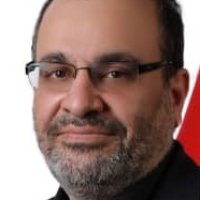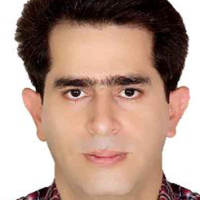Health-Related Quality of Life and Socioeconomic Status: Inequalities among Adults in West of Iran
Author(s):
Abstract:
Background
Socioeconomic status (SES) is one of the main determinants of health-related quality of life (HRQoL), where people with lower SES experience more health problems, have a lower quality of life, and are exposed to have a greater number of health-related risk factors.Objectives
This study aimed to examine the relationships between HRQoL, SES, and several demographic factors among the residents of the city of Ilam (located at the West of Iran).Methods
This cross sectional study was conducted on 400 households from 3 districts of the city of Ilam in 2015. The participants were selected on the basis of the multistage sampling method. The second version of the 12-item Short-Form Health Survey (SF-12v2) questionnaire and the Wealth Index were used to measure HRQoL and SES, respectively.Results
The mean scores of the physical component summary (PCS) and the mental component summary (MCS) were 46.32 ± 9.69 and 42.12 ± 9.11, respectively. The findings indicated that PCS (P = 0.01) and MCS (P = 0.01) were significantly related to SES (wealth index). The demographic variables of age, gender, education level, marital status, job status, and home ownership (P Conclusions
HRQoL is directly related to SES, in that HRQoL is higher in families with higher SES. Similarly, HRQL is higher in younger people, men, and those with a university degree. A decrease in socio-economic inequalities and the gap between the rich and the poor can enhance the individuals health status and HRQoL within a community.Keywords:
Language:
English
Published:
Iranian Red Crescent Medical Journal, Volume:19 Issue: 7, Jul 2017
Page:
6
https://magiran.com/p1730870
مقالات دیگری از این نویسنده (گان)
-
Completeness of Colorectal Cancer Pathology Reports in Iranian National Population-Based Cancer Registry System
Nazanin Azmi-Naei, Ali Ghanbari-Motlagh, Afshin Ostovar, Yousef Moradi, Mohsen Asadi-Lari
International Journal of Cancer Management, Dec 2024 -
Characterization of Staphylococcus aureus Nasal Carriage Among Healthcare Providers in an Intensive Care Unit: Insights into Antibiotic Resistance Profiles and Virulence Gene Distribution
, Fatemeh Riyahi Zaniani *, Reihane Raje
Archives of Clinical Infectious Diseases, Dec 2023 -
COVID-19 Vaccination in Adolescents: Side Effects and Symptomatic Reinfections
Maryam Mazaheri, *, Zahed Rezaei, Hamidreza Aghababaeian, Leila Mohebbi, MohammadAmin Eghtedari
Archives of Clinical Infectious Diseases, Dec 2023 -
Examining the Completeness of Breast Cancer Pathology Reports Registered in the Population-Based Cancer Registration System in Iran during 2016 to 2018
Zeynab Moradian Haft Cheshmeh, Afshin Ostovar, Ali Ghanbari Motlagh, Mohsen Asadi-Lari*
Medical Journal Of the Islamic Republic of Iran, Winter 2024



